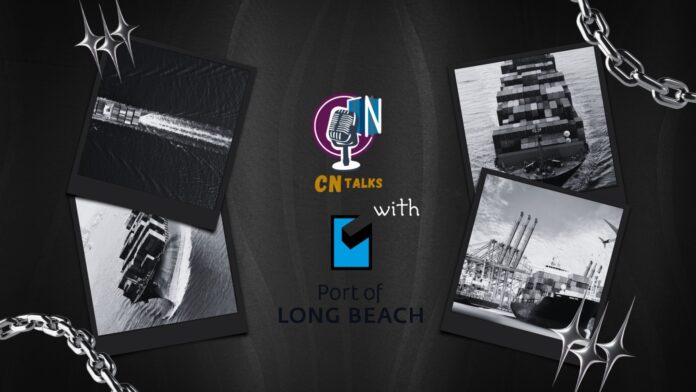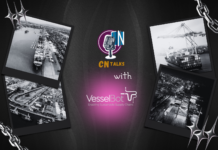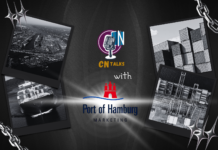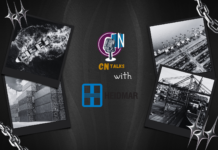
In this exclusive interview, Antonis Karamalegkos, Managing Editor of Container News, speaks with Mario Cordero, CEO of the Port of Long Beach, about the port’s record-breaking performance in 2024 and the key factors behind its success. Cordero shares insights on the economic drivers fueling growth, the port’s ambitious environmental initiatives, and its progress toward digital transformation. Cordero also discusses the evolving role of Artificial
Intelligence (AI) in the shipping industry and offers his perspective on global trade uncertainties, including tariff policies and geopolitical challenges.
What is your comment on the Port of Long Beach performance in 2024?
The Port of Long Beach has performed very well. For the calendar year 2024, we moved 9.6 million TEUs, which is a record number in our 113-year history. From the commercial side, we’re doing great.
What were the main drivers to achieve these results?
I think, first and foremost, the United States has had a strong economy over the past few years, which translates into increased consumer spending. The American consumer has been resilient in terms of spending. We’re doing very well in both consumer and durable goods, thanks to the economy.
Another factor is the labor negotiations on the East Coast and Gulf Coast of the United States. I’m sure a percentage of our increase is due to shippers deciding to move their cargo to the West Coast to gain more certainty.
Additionally, there has been anticipation of tariff implementation by shippers, prompting them to advance or frontload their imports to the West Coast. Overall, I believe these combined factors led to record numbers. However, the major driver remains the economy and consumer spending.
Is this upward trend in container volumes expected to continue in 2025?
There is a lot of uncertainty right now. Although uncertainty is common in goods movement and global trade, the tariff environment makes the future unpredictable regarding the extent of tariff implementation.
As a significant portion of the Port of Long Beach’s imports come from China, it remains to be seen what the tariff implementation will look like and what potential retaliation steps China might take. They have already announced some tariffs on U.S. exports, so it’s a wait-and-see scenario.
However, international trade is vital to both countries. We’ve been operating in a tariff environment since the first Trump administration, and President Biden didn’t remove many of those tariffs. Therefore, we are more acclimated to the tariff dynamics.
Are there any lessons from the previous term of Trump and the similar tariff policies that had been implemented in 2018?
The Port of Long Beach is 113 years old, having first opened for business in 1911. We’ve been able to withstand various uncertainties over the years. The last unforeseeable event that shocked the world was Covid-19. In 2020 and 2021, we navigated the supply chain crisis very well, regardless of the administration in Washington.
Ports are crucial to a country’s economy. We’ll continue to navigate different trade policies because, at the end of the day, international trade is essential to countries worldwide — whether in Europe, China, or the Western Hemisphere. We will continue moving cargo on both the export and import sides.
How was the environmental performance of the Port of Long Beach in 2024? What were the milestones of the previous year, and what are the targets for 2025?
On the environmental side, the Port of Long Beach has been stellar in its mission to reduce emissions. Back in 2005, when I was a commissioner at the Port of Long Beach, we introduced the Green Port Policy and committed to reducing emissions. Compared to the baseline year of 2005, we’ve reduced emissions of Particulate Matter (PM) by 92%, Nitrogen Oxides by 71%, and Sulfur Oxides by 98%. We are very proud of our accomplishments.
Globally, the transportation community is coming together to address decarbonization and reduce harmful emissions. We’re on track not only to achieve our goals but to move toward zero emissions. That’s our next step.
Is there any specific target about when you expect to have zero-emission operations?
Our goal is to have zero-emission trucks at the Port complex by 2035. I’m very optimistic that we’ll achieve this even before 2035. Lithium-ion battery technology is being increasingly implemented, especially in automobiles. The challenge now is how effective these batteries will be in heavy-duty trucks.
Currently, we have about 457 zero-emission trucks at the Port complex — a small percentage of the St. Peter Bay complex, which includes Long Beach and Los Angeles. However, we’re making progress, and our customers and trucking companies are collaborating to transition to zero-emission transportation using both lithium-ion batteries and hydrogen fuel cells.
We also have 80 hydrogen fuel cell trucks. I’m confident that over the next five years, we’ll see a significant increase in the percentage of zero-emission trucks. As for cargo-handling equipment, our goal is to achieve zero emissions by 2030. While this may be more challenging, about 23% of our cargo-handling equipment is already zero-emission — more than any other port in the United States. We’re confident that we’ll achieve our goals.
Moving on to the progress of the port’s digitalization, could you give us an update on new technologies and digital systems implemented at the Port of Long Beach operations?
That’s a great question. A couple of years ago, we announced our digital transformation project known as the Supply Chain Information Highway — an integrated system for data sharing among our customers and stakeholders. We’re now in the second implementation phase, with several terminals participating in a pilot project. One Class I railroad has joined us, and we expect a second Class I railroad to become a partner as well.
The project follows a three-phase approach, and we’re on track with the second phase. Data transformation is now a top priority in our industry, and we’ve been recognized for leading the way with the Supply Chain Information Highway project.
How do you believe that Artificial Intelligence will transform the port sector and, more generally, the shipping industry in the coming years?
I think it is fair to say that every organization is exploring AI technology right now — you’d be remiss not to. We’re evaluating how AI can benefit our operations and exploring both its pros and cons. In the future, I believe AI technology will become part of the Port of Long Beach’s operations.
What is your comment on the impact of the Red Sea crisis on the operations of the Port of Long Beach, as well as the U.S. East Coast ports?
There has been no impact on the Port of Long Beach, as Suez Canal traffic bound for the United States is directed to East Coast ports. However, from what I understand, there hasn’t been a significant impact beyond vessel scheduling disruptions.
The arrivals and the departures of the ships have really impacted, as geopolitical conflicts have complicated the Suez Canal route, forcing vessels to take longer routes around the southern tip of Africa, up the West Coast of Africa, to Europe, and then to the United States.





